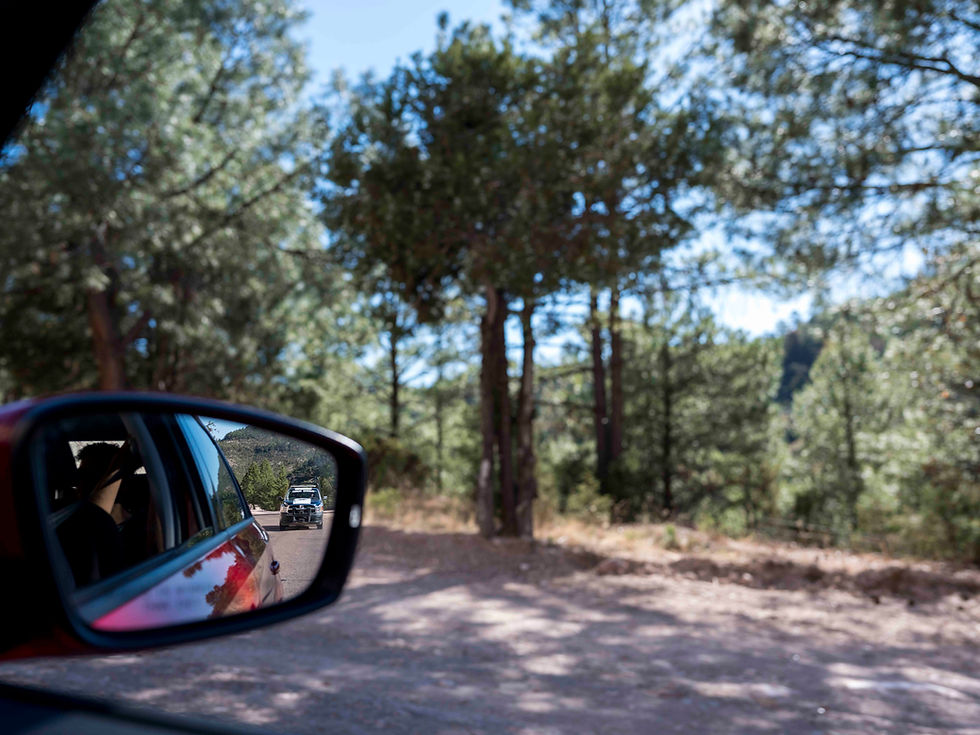ISELA GONZALES
- Thom Pierce

- Jun 3
- 4 min read
Updated: Sep 25
Category: Behind The Image
Series: The Defenders
Location: Mexico
Year: 2018

This month, July 2025, I am looking back at The Defenders - logistically the hardest project that I have ever taken on and, in many ways, one of the most exciting.
I will be dissecting some of the portraits and recounting some of the experiences of making this series.
Isela Gonzales - Creel, Mexico
My Defenders adventure began in Chihuahua province of Mexico, a place that quickly turned out to be the most dangerous of the whole trip. Amazingly it took me two days and 6 flights to get there. Starting in Cape Town I flew to Johannesburg, Sao Paolo, Bogota, diverted to Acapulco, Mexico City and on to Chihuahua.
Security was a big issue for this trip so at the last minute The guardian decided I needed to pick up a satalite phone from London and Global Witness wanted me to do a hostile environment training course. Neither of these things were possible just days before I was due to start the project so I opted to go without either.
However, I was met at the hotel by a small team from Peace Bridges International (PBI) who gave me a thorough security briefing and then took me out for dinner.

The next morning I met with Isela Gonzalez, director of Alianza Sierra Madre, a fierce activist for the land rights of indigenous people. We travelled together to the town of Creel as Isela judged it to be too dangerous for us to take portraits outdoors in the actual area that she was campaigning to protect and my brief was for environmental portraits.
As we were driving, when another car approached passed us, I was told to duck down in my seat. On one occasion Isela pointed to a motorbike behind us and said "remember him, you will see him again soon". And sure enough every time we stopped he would either pass us or be hovering in the distance.
Needless to say I was scared. I didn't sleep that night. I had no idea what I had got myself into but I was informed that "they" knew I was there, and why I was there and so we had to lay low. I fully expected my door to be kicked in during the night and to wake up to a gun in my face.
It occurred to me as I lay there that this was Isela's daily reality. She could be taken out at any time, she lived in perpetual fear of the repercussions of her principled stance and yet she continued.
The next day we travelled to the forrest, home to communities of indigenous people and Isela took time to chat with them. They were our protection and being on their land we felt safe to move around and create some portraits.
Leaving Creel we requested a police escort as we did not feel safe at all. They had come to know Isela and her work and were obliged to help when situations became complicated. They met us at the hotel and escorted us way past the limits of the town.

Back in Isela's home town we went to her home to record an interview and meet with other members of her team. A large oil painting of Frieda Kahlo, a fitting symbol of strong, politically active Mexican women, hung on the wall behind her desk. It seemed an obvious, yet important, visual narrative to use; a little gift from the portrait gods that sometimes give you a something to work with if you take the time to look.
The Technical Stuff
The framing of this shot was always going to be a little tricky, there always needs to be room to breathe in a portrait, you don't want your subject to be shoved into the corner. But at the same time you also don't want to cut off the head of one of the most important painters of the 20th Century!
I don't like shooting wide on a portrait framing (vertical) but in this case I had no choice. If you look carefully you can see that the top of the painting is a little bowed and Isela's hand is elongated. Both unwanted to effects of the 45mm lens on a medium format camera (Fuji GFX).
Positioning was important as I didn't want Isela to be in line with the painting, in the centre of the frame, it would have seemed too static. It is with gratitude to Arnold Newman, the great master of portrait photography, that I can feel a little more comfortable about this type of framing. He was able to push the boundaries of what was considered conventional in portraits. His portrait of Salvador Dali in NYC, 1951 is a good example of this.
Isela was one of those people who just seem to know how to inhabit the world in a way that is true to them. Even though we were in a precarious situation, to say the least, I felt like she had everything under control at all times.
It's worth reading the article by Jonathan Watts, from the interviews that I made with Isela, to find out more about her work.
Here's the link: https://www.theguardian.com/environment/2018/jul/21/nowhere-is-safe-for-mexicos-land-defenders-as-violence-grows
Let me know your thoughts and questions below...
T










Comments